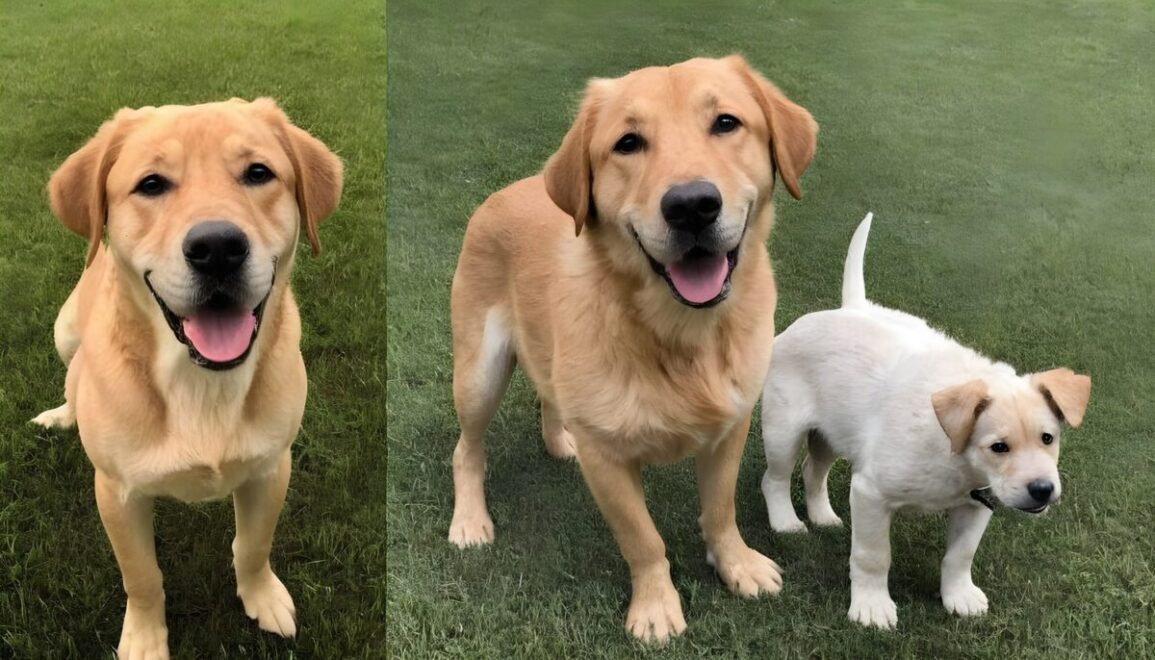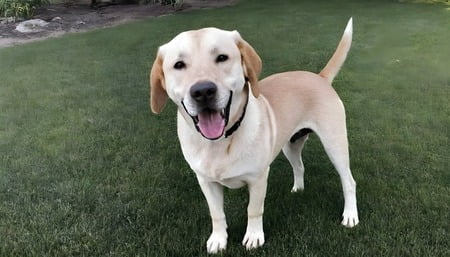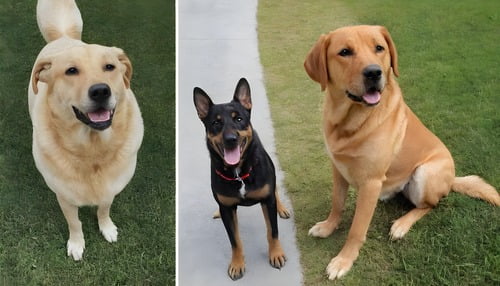
Set out on an extensive investigation into the complicated world of canine development as we explore the complexities surrounding the essential address of when dogs stop growing?. This comprehensive guide is planned to cater to dog proprietors, devotees, and anybody interested by the different directions of canine advancement. From the organizing part of genetics to the dietary symphony affecting development, this blog endeavors to supply a holistic and intensive understanding of the canine growth journey.
Table of Contents
when dogs stop growing?

Section 1: The Energetic Stages of Canine Development.
The canine development story unfurls in a arrangement of energetic stages, each clearing out an permanent check on a dog’s journey from puppyhood to adulthood. Starting with the fast crescendo of development during the charming puppy organize, we dive into the factors affecting this stage. Genetics, an invisible force directing a dog’s physical destiny, plays a central part, whereas breed-specific variations include complicated nuances to the generally development timeline. By exploring the formative complexities of each stage, readers will pick up a significant comprehension of the canvas on which the canine development story is painted.
The puppy arrange, characterized by rapid development, may be a mesmerizing period checked by richness and change. Genetics lay the establishment for a dog’s development potential, affecting not only the ultimate estimate but also the pace at which they reach development. Breed-specific characteristics further include complexity, with a few breeds experiencing a quick rising to full measure, whereas others experience a more slow movement.
Moving through youth, the development rate tends to slow, and the development of skeletal structures gets to be a central point. The closure of growth plates may be a key marker of this transition, signaling the end of significant physical growth. Understanding these nuances within the energetic stages of development is basic for pet owners looking for to comprehend when their dogs are likely to reach their full potential.
Section 2: The Multifaceted Tapestry of Impacts on Canine Growth.

A symphony of factors meets to shape the wonderful frame of a developing canine. Genetic notes compose the foundational tune, deciding not as it were a dog’s ultimate size but too affecting the pace at which they reach maturity. The nutritional composition of a dog’s diet weaves another basic thread into this tapestry. This segment meticulously explores the significant affect of nutrition on canine development, emphasizing the significance of a well-balanced slim down in forming a dog’s physicality.
Genetics may set the organize, but sustenance is the instrumental constrain that guides a dog’s growth. Ensuring the proper balance of proteins, vitamins, and minerals is vital for the improvement of solid bones, muscles, and in general physical make-up. Understanding the dietary needs at different stages of a dog’s life is fundamental, as nutritional imbalances can affect growth designs and possibly lead to health issues.
Simultaneously, we explore the broader natural sonata, considering the parts of work out, generally health, and outside factors that contribute to the symphonic composition of canine development. Regular work out isn’t as it were basic for keeping up a sound weight but moreover plays a part in advancing proper muscle advancement and joint health. Natural factors, such as exposure to toxins or upsetting conditions, can affect a dog’s generally well-being and, subsequently, their growth direction.
In this segment, we dive into the complexities of how genetics, nutrition, and the environment harmonize to make the symphony of canine development. Recognizing the interaction of these factors gives dog owners with a nuanced understanding of their role in forming a dog’s physical improvement.
Section 3: The Breed-Specific Symphony.
The canine kingdom gloats an surprising differences of breeds, each contributing a special and captivating chapter to the terrific symphony of development. This area attempts an in-depth exploration of breed-specific growth timelines, advertising experiences into the particular paces at which different breeds mature. Through engaging case studies and cases, readers will pick up a nuanced point of view, empowering them to appreciate the diverse cadence of growth across different breeds.
Breed-specific variations add a layer of complexity to the understanding of canine development. A few breeds show early development, coming to their full estimate inside the primary year, whereas others may continue to develop for an extended period. Little breeds by and large develop quicker than bigger breeds, emphasizing the importance of considering the specific characteristics of the dog’s breed when evaluating their growth direction.
By highlighting the interesting development designs of different breeds, this area points to engage dog owners with the information to expect when their hairy companions are likely to reach development. From the compact stature of toy breeds to the magnificent growth of large breeds, understanding the breed-specific symphony improves the generally appreciation of the canine growth journey.
Section 4: The Agreeable Crescendo of Physical and Behavioral Maturity.

As dogs move from the rich notes of youth to the agreeable chords of adulthood, a symphony of physical and behavioral changes emerges. This area serves as a comprehensive direct to recognizing the nuanced indicators proclaiming the summit of the development journey. From the unobtrusive closure of growth plates to the shifts in energy levels and personality, understanding these prompts empowers dog owners to explore this transitional stage with knowledge and responsiveness.
The physical pointers of maturity include the closure of growth plates, a prepare that changes among breeds and influences when dogs stop growing. Growth plates are areas of cartilage near the ends of long bones, and their closure signals the conclusion of significant development. Radiographic evaluations by veterinarians can give important experiences into the status of a dog’s growth plates, supporting within the assurance of physical maturity.
Behavioral changes too play a noteworthy part in signaling a dog’s move to adulthood. The richness and energy of puppyhood allow way to a more settled deportment. Dogs may gotten to be less hyperactive, and their energy levels tend to stabilize. Moreover, the social elements of intuitive with humans and other dogs may experience subtle shifts as dogs reach maturity.
By diving to the complicated exchange of physical and behavioral signals, readers gain a deeper understanding of the multifaceted nature of canine maturity. Recognizing these changes allows dog owners to adjust their care schedules, from nutrition to work out, to suit the advancing needs of their grown-up canine companions.
Conclusion
In this immersive journey through the energetic scenes of canine growth, we have unraveled the genetic, nutritional, and breed-specific complexities shaping a dog’s formative adventure. Outfitted with a comprehensive understanding, readers are well-equipped to interpret the enigma of when dogs stop growing?. The canine growth chronicles are endless and multifaceted, and through shared information, ready to celebrate the uniqueness of each dog’s developmental symphony.
As the ultimate crescendo, we extend an open welcome for readers to share their experiences, questions, and experiences. The symphony of canine growth is as diverse as the breeds it includes, and by fostering a community exchange, we will further improve our collective understanding of this captivating travel. The canine growth chronicles are a confirmation to the strength, flexibility, and excellence of our four-legged companions.
As we conclude this broad exploration, we encourage dog owners to approach their pet’s growth with interest, carefulness, and a commitment to giving the leading possible care. The journey from puppyhood to adulthood could be a energetic and transformative experience, and by exploring it with information and kindness, we guarantee that our canine companions flourish at every stage of their development. May the canine growth chronicles continue to unfold with beauty and harmony, leaving an indelible mark on the hearts of those blessed enough to share in the journey.
when dogs stop growing?
1: At what age do most dogs stop growing?
Answer: The age at which dogs stop growing varies significantly based on factors such as breed, genetics, and individual health. On average, smaller breeds tend to reach physical maturity faster than larger breeds. Generally, most small to medium-sized breeds may stop growing between 9 to 12 months, while larger breeds might continue their growth until 18 to 24 months. However, it’s crucial to note that individual dogs within a breed can have unique growth timelines. Regular veterinary check-ups and monitoring developmental milestones can offer insights into when your specific furry companion might complete their growth journey.
2: How can I tell if my dog has stopped growing?
Answer: Determining whether your dog has stopped growing involves observing both physical and behavioral indicators. One significant physical cue is the closure of growth plates, areas of cartilage near the ends of long bones. Veterinarians can assess the status of growth plates through radiographic imaging. Additionally, changes in behavior can signal the transition from adolescence to adulthood. As dogs mature, they often exhibit a more settled demeanor, with a decrease in hyperactivity and stabilized energy levels. Keep a close eye on these changes, and consult with your veterinarian for personalized guidance on your dog’s growth status.
3: Does diet play a role in a dog’s growth?
Answer: Absolutely. A well-balanced and nutritionally appropriate diet is crucial for supporting a dog’s growth and development. During the puppy stage, dogs require a diet rich in essential nutrients, including proteins, vitamins, and minerals, to promote healthy bone and muscle development. However, overfeeding can lead to excessive weight gain, potentially impacting a dog’s growth negatively. As dogs transition to adulthood, adjusting their diet to meet their changing nutritional needs is essential. Consulting with a veterinarian to create a tailored feeding plan based on your dog’s breed, size, and health status ensures they receive the optimal nutrition for their specific growth phase.
